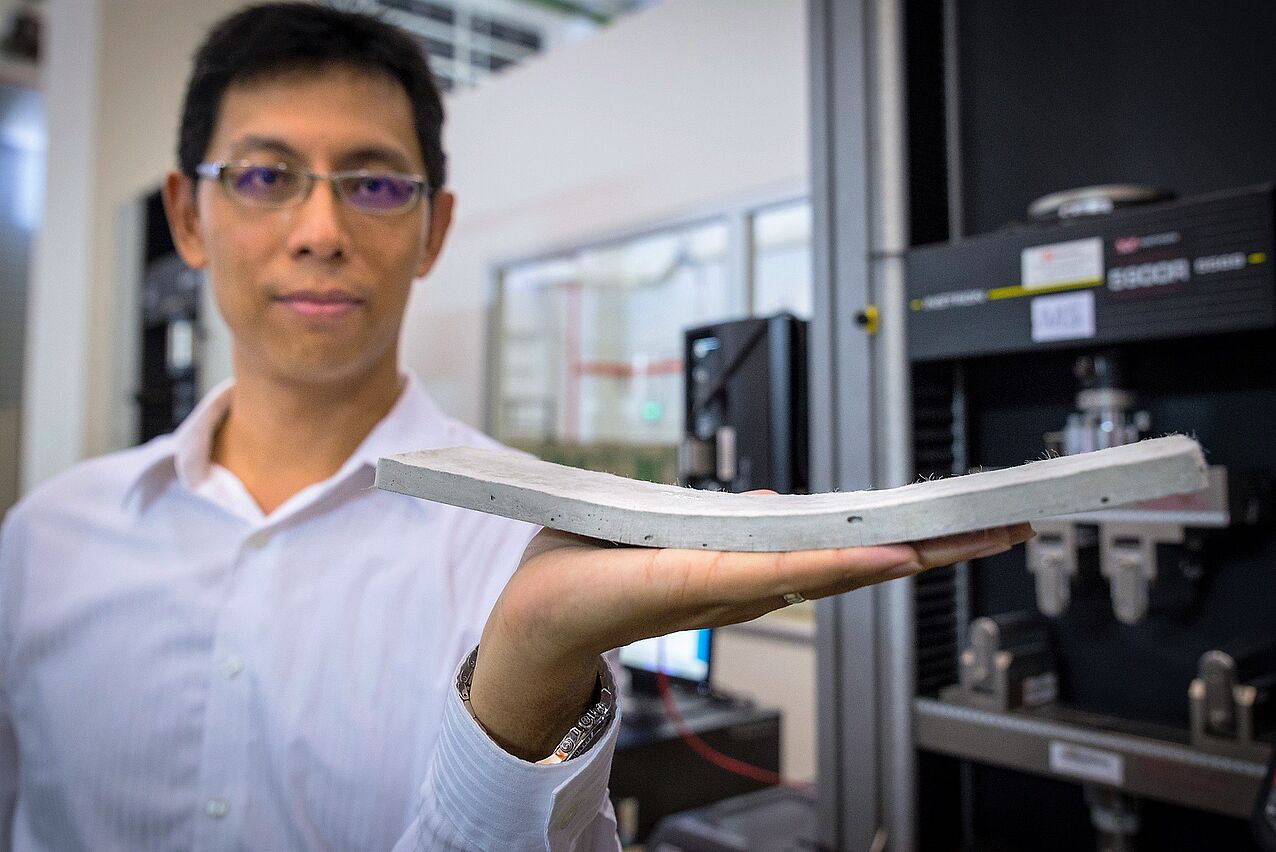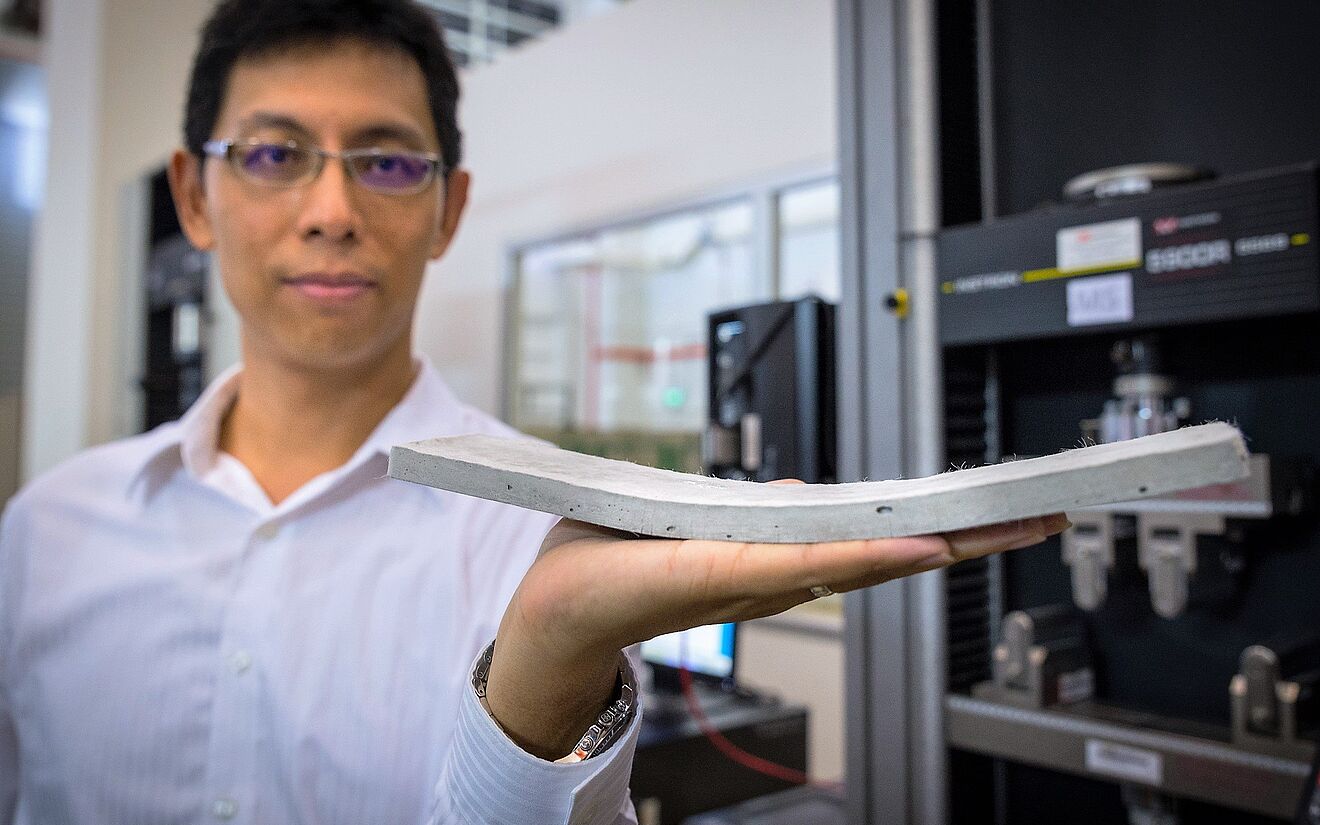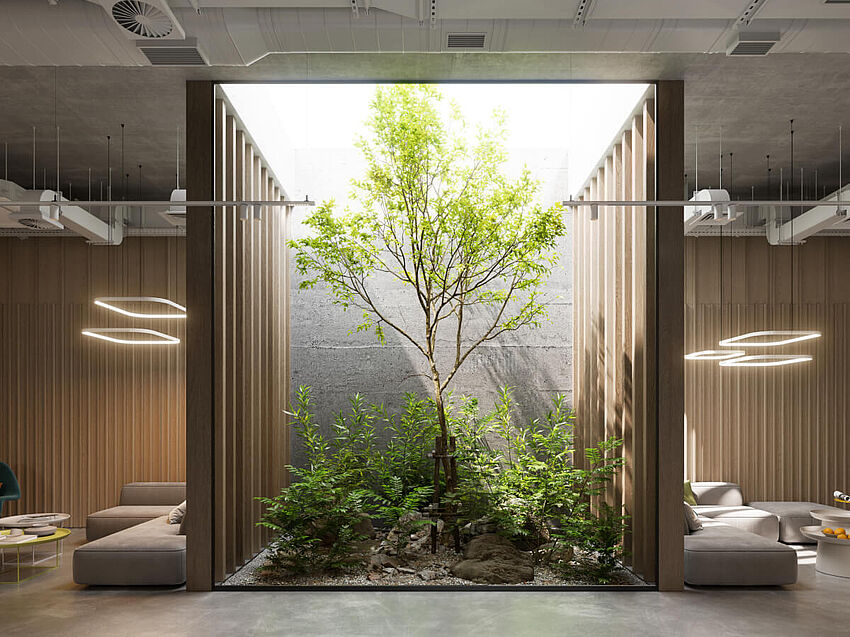The Predictive Corrosion Research That Could Change Material Design
Concrete is an infinitely variable building material. In use for thousands of years, it was repeatedly developed further in the course of time so that today there are types of concrete with specific properties for the most varied of application areas. And the history of the development is far from over. In particular in the area of textile concretes, research is actively being carried out worldwide in order to make concrete more efficient, more resource-conserving and thus ultimately more sustainable for the future. The latest stunt in this field is a flexible concrete made in Singapore.

Scientists of the Industrial Infrastructure Innovation Center of the Nanyang Technological University (NTU-JTC I³C) in Singapore recently developed a new concrete recipe that could soon facilitate road construction in the truest sense. ConFlexPave stands for a flexible concrete, which is more capable and durable than conventional concretes. The secret to these special performance features lies in the polymer microfibers. Thinner than human hair, these transfer the loads to the entire length of a component. Where conventional concrete normally breaks, ConFlexPave simply flexibly bends.
Fewer and shorter building sites
The flexible concrete was developed for road construction. It is to be used here in the form of thinner and therefore lighter weight pre-fabricated plates, which can be installed quickly. The materials can be used to shorten road work by half and the finished streets should require maintenance less frequently. In addition, the flexible concrete has improved grip.
Scientists achieved the breakthrough by looking on the microscopic level to see how the material components interacted with each other. This made it possible to create a mixture that is specifically tailored to the material requirements of the road covering. Thus far ConFlexPave has been manufactured first in small plates in the laboratory. The next step will be to test the material on a large scale and under real conditions, namely to stress it with people and vehicles.

Fibers for the future
As far as the principle is concerned, ConFlexPave is a kind of textile concrete. It is thus classified in a group of lightweight innovations, which will shape building in the near future. Their most famous representative currently is probably carbon concrete. In the long term this is meant to replace the still indispensable reinforced concrete. Similar to flexible concrete, it has a very high degree of lightness in conjunction with tremendous compressive and tensile strength, which allows for a more delicate and therefore extremely material-conserving building. Carbon concrete is also much more durable than primitive concrete with steel reinforcement.
Unlike with flexible concrete from Singapore, the carbon concrete research has long since left the laboratory. Among other things thanks to the major research project "C3 – Carbon Concrete Composite" funded by the Federal Ministry of Education and Research. Its consortium with over 150 members is coordinated by the Technical University of Dresden, which is building the first carbon concrete house in the world on its campus by 2019. On the campus of the nearby Technical University of Chemnitz, which is also participating in C3, a successful example of filigree carbon concrete construction can already be admired in the form of a research pavilion.




